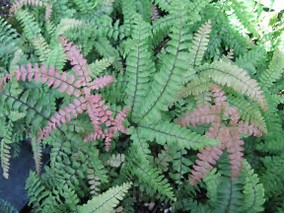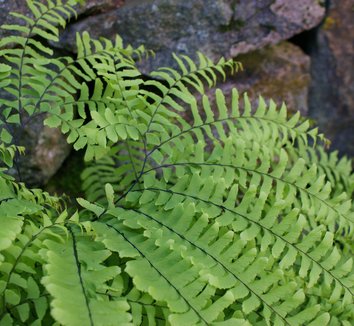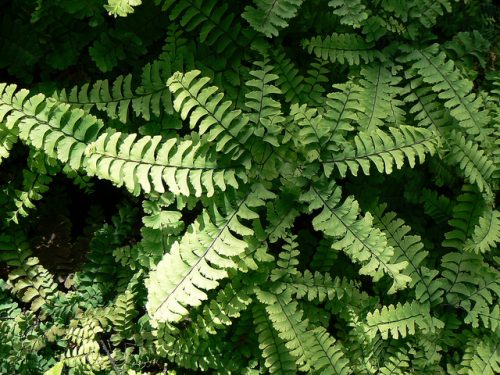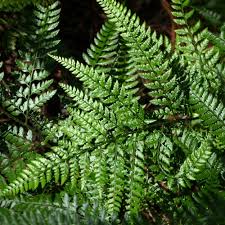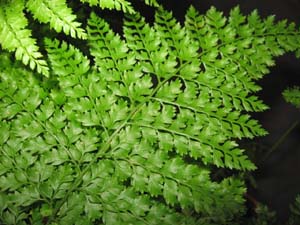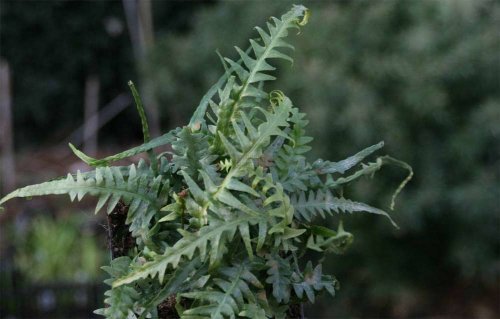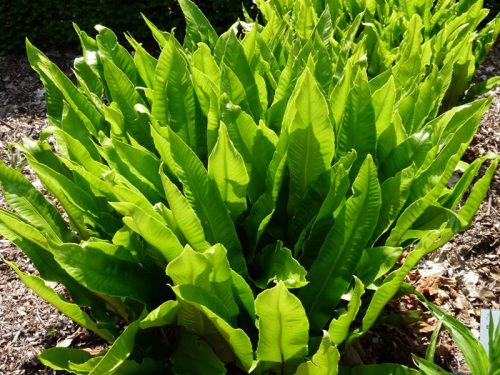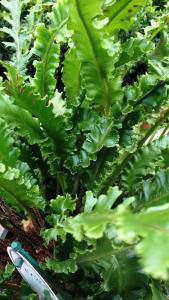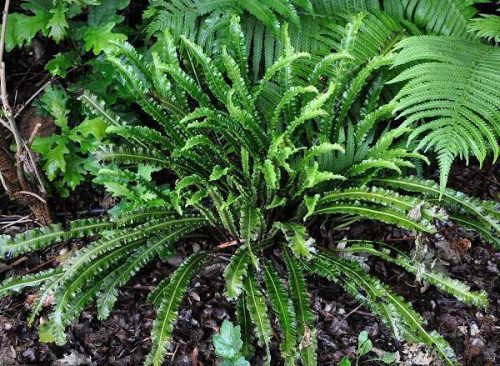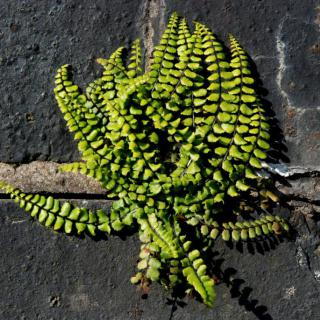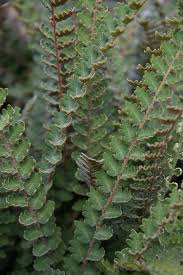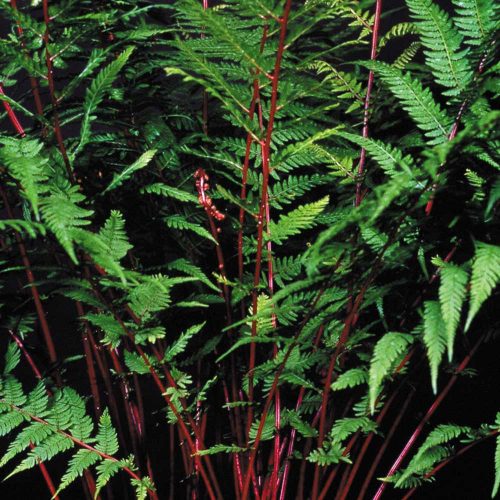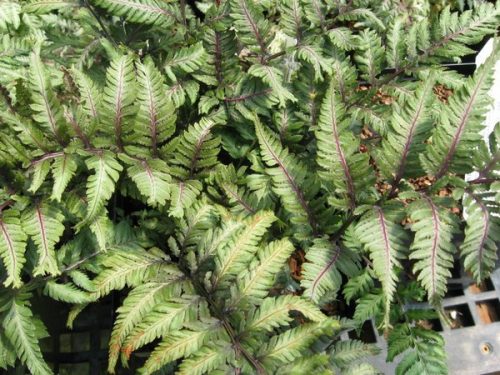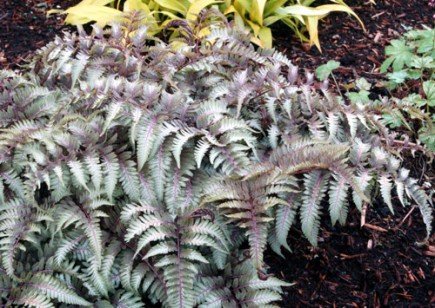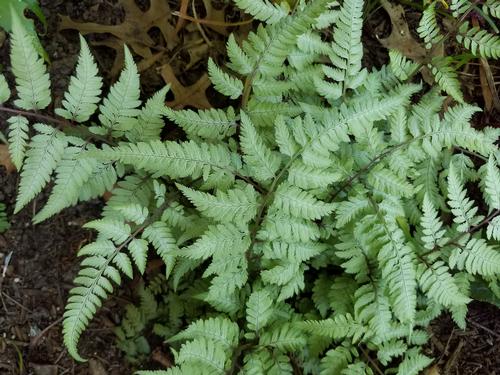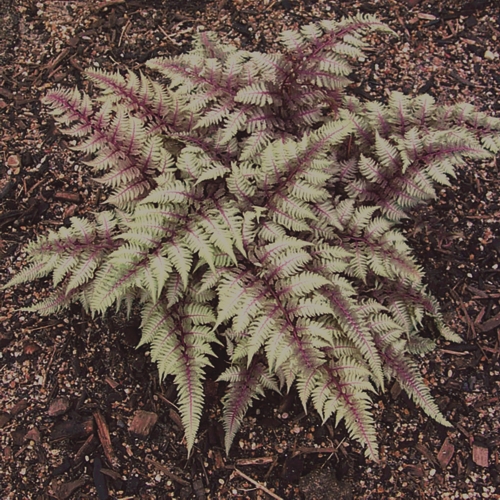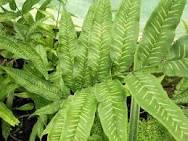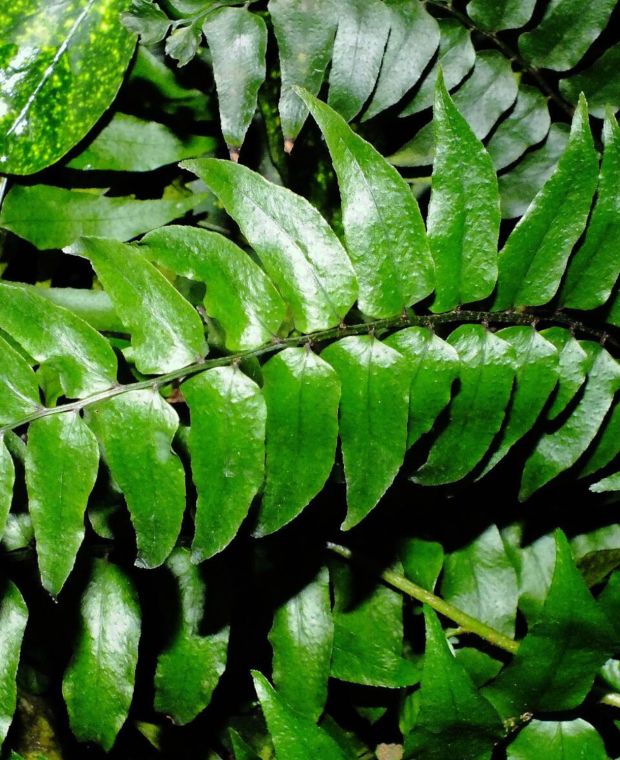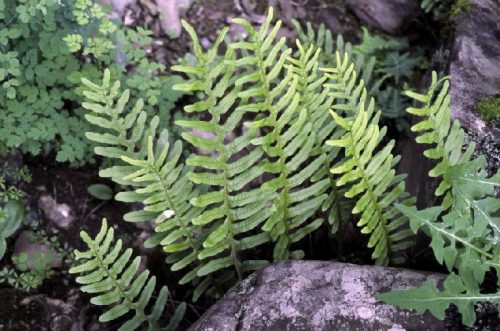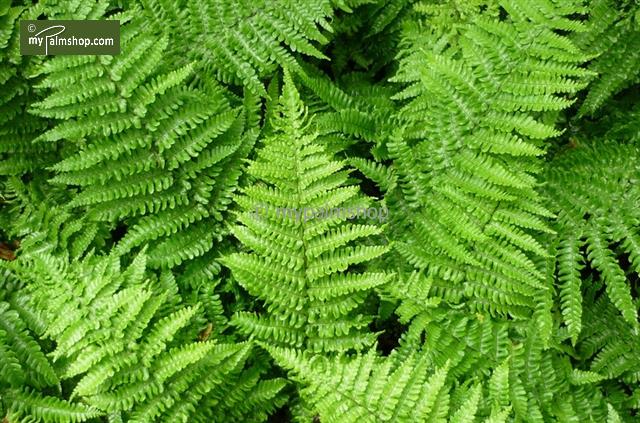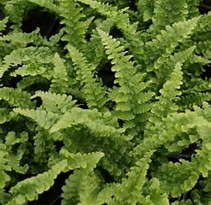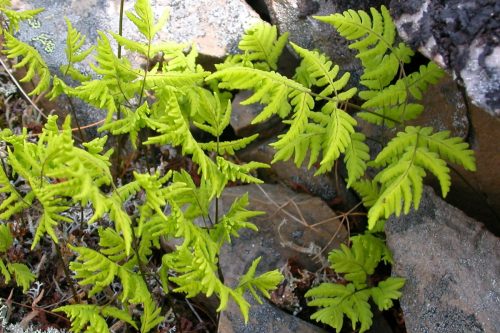-
 Adiantum aleuticum is very similar to A. pedatum but noticeably different when compared together. Adiantum aleuticum is native to the western half of North America and East Asia. It is a very hardy fern, and, despite its delicate appearance, very tough. 'Imbricatum' is a dwarf selection with green to blue-green foliage and purple wiry rachis. This variety forms a dense clump and is very easy to establish in good humus-rich, moist soil in shade.
Adiantum aleuticum is very similar to A. pedatum but noticeably different when compared together. Adiantum aleuticum is native to the western half of North America and East Asia. It is a very hardy fern, and, despite its delicate appearance, very tough. 'Imbricatum' is a dwarf selection with green to blue-green foliage and purple wiry rachis. This variety forms a dense clump and is very easy to establish in good humus-rich, moist soil in shade. -
Out of stock
 Adiantum can be deciduous or evergreen ferns with shiny black stalks bearing simple or more usually pinnately divided fronds, the segments fan-shaped, oblong or rounded, carrying spores under reflexed marginal flaps
Adiantum can be deciduous or evergreen ferns with shiny black stalks bearing simple or more usually pinnately divided fronds, the segments fan-shaped, oblong or rounded, carrying spores under reflexed marginal flaps -
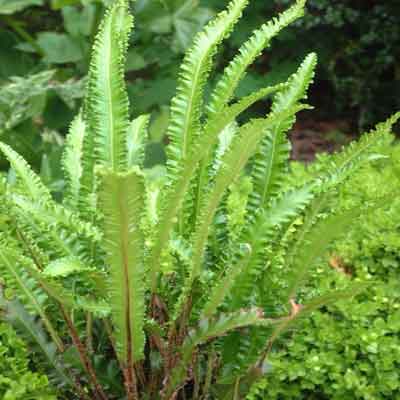 The Narrow Hart's Tongue fern differs from the plain species, unsurprisingly, by having narrower leaves but also with an undulating margin giving an extremely attractive rippling effect to the plant as a whole. It is also a touch smaller than the species when mature, tolerant and a must for fern collectors.
The Narrow Hart's Tongue fern differs from the plain species, unsurprisingly, by having narrower leaves but also with an undulating margin giving an extremely attractive rippling effect to the plant as a whole. It is also a touch smaller than the species when mature, tolerant and a must for fern collectors. -
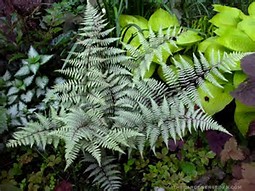 From the garden of Virginia's Nancy Swell comes this stunning lady fern with silver-white fronds and a decidedly upright habit. Leaves age to light green with new fronds appearing throughout the season. Upright with a beautiful formal appearance that really stands out in the shady garden. This fern really prefers shade and will stand up with all fronds perpendicular to the ground in full sun.
From the garden of Virginia's Nancy Swell comes this stunning lady fern with silver-white fronds and a decidedly upright habit. Leaves age to light green with new fronds appearing throughout the season. Upright with a beautiful formal appearance that really stands out in the shady garden. This fern really prefers shade and will stand up with all fronds perpendicular to the ground in full sun. -
Out of stock
 A genus of a single species closely related to Cyathea, but is not a true tree fern. Is a native to the Americas from Cuba to Mexico down to southern Chile. A soft foliage with large graceful fronds to 6’ long and blueish silver glaucous beneath makes this a beautiful dramatic fern and a focal point in any garden.
A genus of a single species closely related to Cyathea, but is not a true tree fern. Is a native to the Americas from Cuba to Mexico down to southern Chile. A soft foliage with large graceful fronds to 6’ long and blueish silver glaucous beneath makes this a beautiful dramatic fern and a focal point in any garden.

